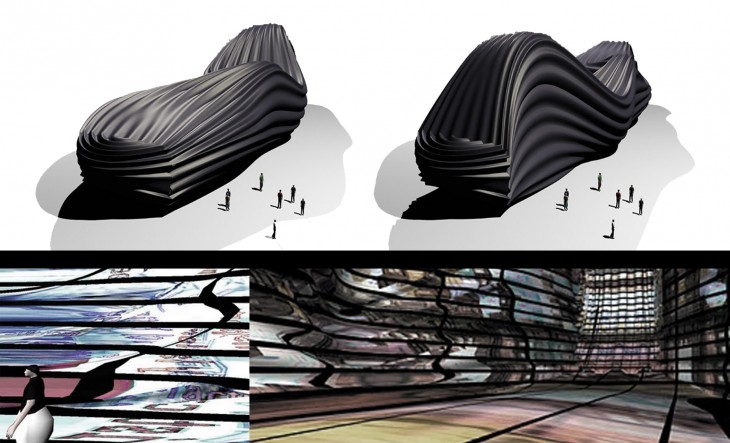What is the role of an architect and how architecture has been transformed nowadays, where human beings live between different environments? Virtual reality changed radically the perception of both space and time. According to Manuel Castells we live in the space of flows. Architecture becomes more complex and relations appear to be crucial. Mark Wigley, in his text, discusses the controversial relation between creating architecture and atmosphere.
He defines the atmosphere within architectural entities as the intangible effect which people perceive with their senses. From his point of view, designing/constructing architecture and creating atmosphere are inextricable. Every single decision that an architect makes, creates a different environment, either deliberately or accidentally.
Building envelops are not identified as physical limits creating enclaves or exclaves but as the in-between space among different environments. The same occurs in urban scale. Concerning the atmosphere within a building, objects (furnishing, decor) play a vital role. Alternating them we can create different ambience-function opposing to the statement “form follows function” or “function follows form”. On the contrary, the physical and thermodynamic principles do not change, so according to Philippe Rahm “form and function should follow the climate”. Consequently, interaction grows as architects’ main concern. Interaction between: a) Nature (landscape, weather conditions etc.) and artificial environment, b) Users and buildings and c) Humans.
By mentioning quotes and drawings of significant architects the author creates juxtaposition between disparate notions, either for or against the concept of atmosphere. Furthermore, the different representation techniques of Le Corbusier and F. L. Wright lead to two opposed teaching techniques of architecture. The first is based on positional, linear relations while the latter deals with atmospherical, nonlinear relations. This brings us to a fundamental question: Which is the best way to teach architecture nowadays that hand drawings have been replaced by computer aided design and programming languages?
While I was reading the aforementioned text my concern about subjectivity in architecture was aroused. If we take for granted that architecture is nothing more than creating an ambient environment how can we regulate objectively many different parameters simultaneously? Who determines which architectural design is good or bad? Is there any manual that we can read in order to answer this question or it depends on our personal values and expectations?
